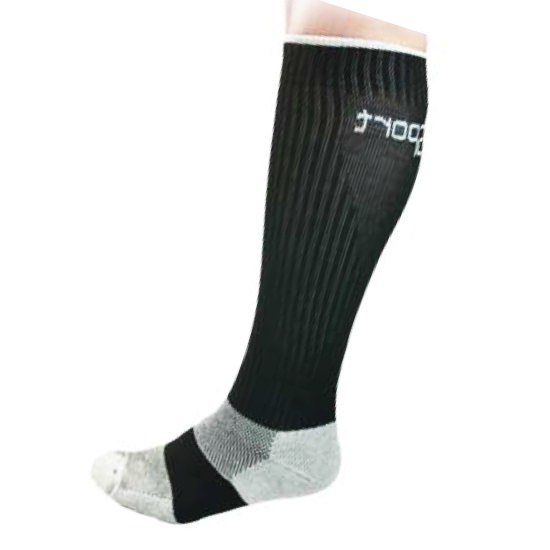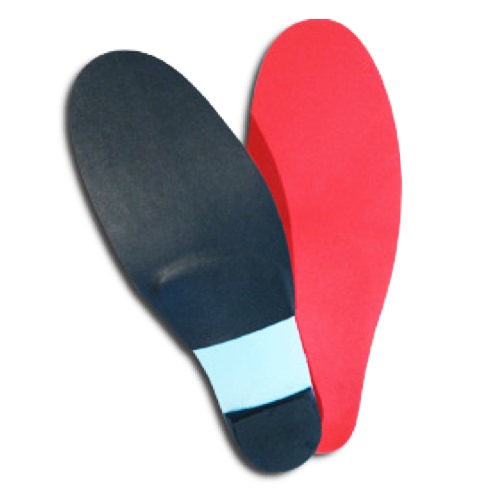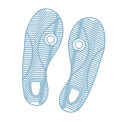How Orthotics And Diabetic Clothing Help Diabetics And Reduce Foot Complications
Posted by Fred Thompson | Tuesday, April 30th, 2019 | 1,735 views
If you have diabetes, continue reading to find out how full-contact foot orthotics and proper diabetic wear can help alleviate many of the complications associated with the diabetes including Diabetic Peripheral Neuropathy and peripheral artery disease.
 According to the Health Fact Sheet for Statistic Canada, approximately 2.3 million Canadians reported being diagnosed with diabetes in 2017. That’s approximately 6.39% of the population.
According to the Health Fact Sheet for Statistic Canada, approximately 2.3 million Canadians reported being diagnosed with diabetes in 2017. That’s approximately 6.39% of the population.
Background
Causes
There are 2 types of diabetes which include Type 1 diabetes, and Type 2 diabetes. To summarize, Type 1 diabetes occurs when the immune system attacks insulin-producing cells in a person’s pancreas. Type 2 diabetes is primarily caused by lifestyle choices that create insulin resistance and hinders the body’s ability to properly respond to the insulin produced. (source)
Complications
Diabetes has a wide array of complications associated with it including but not limited to Diabetic retinopathy (eye diseases), high blood pressure, heart disease, kidney disease, depression, celiac disease, peripheral artery disease (PAD) and Diabetic Peripheral Neuropathy (nerve damage). The adverse effects of Diabetic Peripheral Neuropathy and peripheral artery disease has on the legs and feet of a person with diabetes, will be our primary focus.
Peripheral Neuropathy is a complication of diabetes which is the loss of feeling and sensation in the legs. When a person experiences Peripheral Neuropathy they are susceptible to frequent undetected injuries, skin ulcerations and even limb loss.
Peripheral artery disease is caused by high blood sugar count and results in the narrowing of the arteries in the left and feet.
In both cases, prescription shoes lower your risk of foot problems and specifically addresses Peripheral Neuropathy and can reduce injury, improve blood circulation, prevent swelling and varicose veins, alleviate fatigue, and prevent deep vein thrombosis (DVT). Make an appointment with us us for more information.
Choosing The Right Diabetic Clothing & Compression Wear
 If you have diabetes, you have quite a few clothing options that will help mitigate the complications of peripheral neuropathy and peripheral artery disease. These include diabetic socks, diabetic leggings, diabetic shoes and slippers, and diabetic hosiery. The legging, socks and hosiery are considered compression wear and are meant to provide preventative and therapeutic support.
If you have diabetes, you have quite a few clothing options that will help mitigate the complications of peripheral neuropathy and peripheral artery disease. These include diabetic socks, diabetic leggings, diabetic shoes and slippers, and diabetic hosiery. The legging, socks and hosiery are considered compression wear and are meant to provide preventative and therapeutic support.
Each of these articles of clothing options are specifically designed to facilitate normal blood circulation and reduce the risks and health issues associated with the disease.
In order for diabetic assistive clothing to be effective, it needs to be properly fitted, adaptive, flexible and constriction free.
How Orthotics Mitigate Diabetic Peripheral Neuropathy
Anatomical orthotic insoles reduce foot pain, increase support, and provide prolonged comfort from your heels to your toes. Custom orthotics will evenly distribute pressure across your foot, increase blood circulation, and reduce the risks of developing foot deformities.
 Although there are common medications that are generally prescribed to treat conditions associated with peripheral neuropathy, when used in conjunction with custom diabetic shoes, symptoms, pain and complications associated with the disease noticeably decrease.
Although there are common medications that are generally prescribed to treat conditions associated with peripheral neuropathy, when used in conjunction with custom diabetic shoes, symptoms, pain and complications associated with the disease noticeably decrease.
Caring For Your Feet on Your Own
- Follow your doctor’s instructions for foot care
- Properly monitor and control your blood sugar
- Regularly inspect your feet for signs of trouble and injury
- Keep your feet as clean as possible
- Apply talcum powder or cornstarch after bathing
- Moisturize your feet if they dry easily
- Check your footwear for foreign objects
- Wear diabetic socks and avoid socks with elastic seams.
- Wear socks and you wear shoes
- Avoid going barefoot to reduce foot injuries
- See your doctor immediately after issues develop
- Be extremely careful when cutting your toe-nails
According to the Canadian Diabetes Association, diabetics should have their feet examined by their doctor on an annual basis to ensure no new conditions associated with Diabetic Peripheral Neuropathy have developed. If conditions have developed, you’ll be referred to a podiatrist (foot doctor) and an endocrinologist (diabetes doctor).

